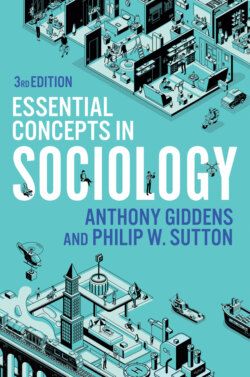Читать книгу Essential Concepts in Sociology - Anthony Giddens - Страница 58
Continuing Relevance
ОглавлениеSome qualitative researchers take the view that measurement and statistical testing are not appropriate for the study of meaning-making humans, while some quantitative researchers see many of the methods adopted by qualitative sociologists as too subjective to be reliable and hopelessly individualistic. But an increasing number of projects now adopt ‘mixed-methods’ approaches, which use both quantitative and qualitative methods. Findings that are consistent across quantitative and qualitative methods are likely to be more valid and reliable than those arrived at using just one. In mixed-methods studies, the choice of research method tends to be driven by research questions and practical considerations. A good example of the productive use of mixed methods can be found in the study of cultural capital and social exclusion over a three-year period (2003–6) by Silva and her colleagues (2009). The project made use of a survey, household interviews and focus groups, thus mixing quantitative with qualitative methods. The authors describe their approach as ‘methodological eclecticism’, arguing that this not only allows a way of corroborating facts but also enables the plausibility of interpretations to be checked.
The embedding of social media into the routines of everyday life has led to new debates and discussions about how best these new media forms, such as Facebook, Instagram, YouTube and Twitter, can and should be studied. One way to find out how sociologists have done this in practice is to carry out a review of the existing literature, a task undertaken in relation to qualitative and mixed-methods research by Snelson (2016). This study looked at 229 papers published between 2007 and 2013 which used qualitative methods, 55 of which also adopted a mixed-methods approach, in order to identify emerging trends in studies of social media. Snelson found that over this period there was an overall increase in qualitative and mixed-methods studies, with Facebook being the most studied platform. The central focus of this body of research was trying to understand how people use and experience social media. To explore this, conventional techniques such as interviews, focus groups, content analysis and surveys were employed. Among the mixed-methods studies, there was a trend towards mixing data collected using conventional methods directly from social media users, with other data harvested from social media content such as YouTube videos, Facebook profiles and social media posts and discussion. As Snelson’s paper concludes, since around 2007, social media research has developed rapidly and is now a field of study in its own right. And, as it develops, sociologists are beginning to understand how best to handle and study the enormous amount of material that is available online and what it may tell us about everyday life today.
